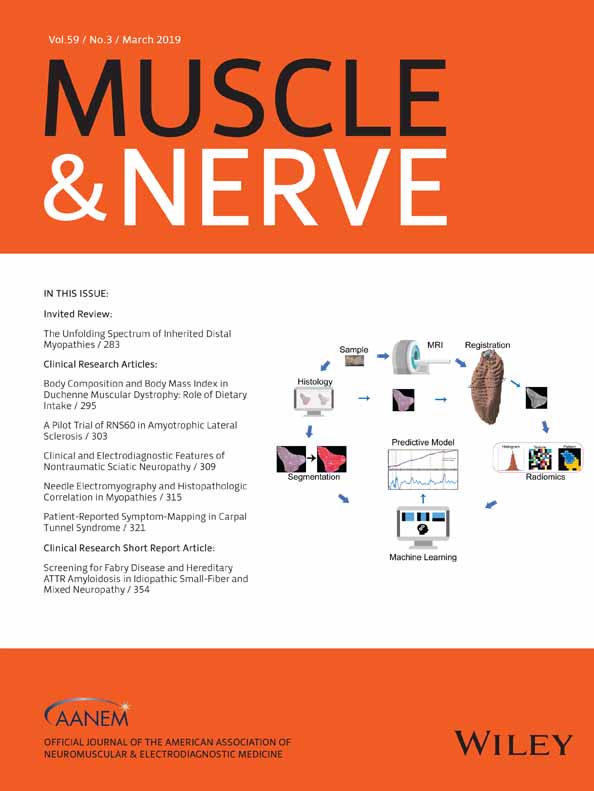VCP myopathy: A family with unusual clinical manifestations
ABSTRACT
Introduction
Valosin-containing protein (VCP) variants that affect muscle, bone, and the nervous system are termed multisystem proteinopathy. VCP myopathy is manifested as limb-girdle weakness, distal weakness and scapuloperoneal weakness.
Methods
We reviewed clinical, genetic, and muscle biopsy data from 6 members of a family with VCP myopathy.
Results
Clinical features of family members were complex and included dementia, myopathy, and hearing impairment. Ophthalmoplegia, ptosis, and dysphagia were present in 3 siblings. Rimmed vacuoles were observed in muscle biopsies, consistent with the pathological changes of VCP myopathy. A heterozygous VCP c.463C>A (p.R155S) that segregated in an autosomal-dominant pattern was identified by genetic analysis.
Conclusions
VCP myopathy can cause unusual manifestations that include ophthalmoplegia, ptosis, and dysphagia. This study increased our understanding of the clinical manifestations of VCP myopathy. Muscle Nerve 59:365–369, 2019




